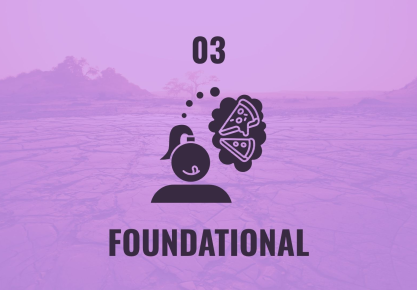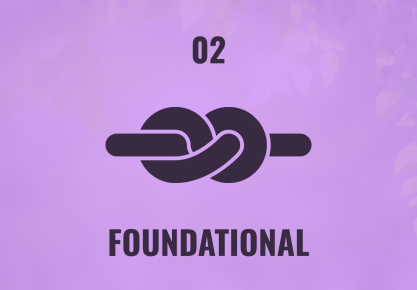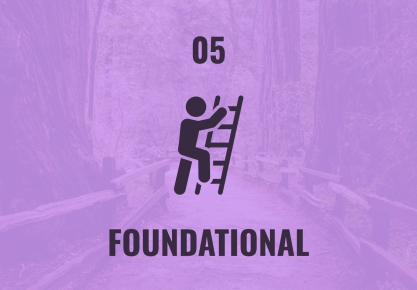If you’re new to the Dharma, we recommend starting with the foundation: Read Post 1: What is Buddhism? and Post 2: The First Noble Truth: Understanding Suffering (Dukkha) Explained
In the first half of the Four Noble Truths, we completed the diagnosis. In Post 2, we faced the reality that life involves Dukkha (suffering/unease), and in Post 3 we traced the root of that suffering to Craving (Tanha).
While this knowledge is critical, it can feel heavy. If suffering is universal and craving is ingrained, where is the hope? The Third Noble Truth is the answer. It is the Buddha’s promise that the mechanism of suffering is not permanent and can be switched off entirely.
The Third Noble Truth states: There is a cessation of suffering (Nirodha).
Welcome to Post 4 of the Skylike Minds Foundational Series.
The Promise: What is Nirodha?
The Pāli word Nirodha means ‘ending,’ ‘stopping,’ or ‘putting out.’ It is about fully ending the craving that causes suffering.
It is the spiritual equivalent of the doctor concluding their diagnosis and saying, “The problem is X, the cause is Y, and there is a guaranteed cure if you follow the treatment plan.” Nirodha is the promise of the cure.
Why Cessation is Possible
The main idea behind Nirodha is Dependent Origination (which we will discuss more later). Put simply:
- If something originates, it must also cease.
- Since suffering (Dukkha) originates from craving (Samudaya), the moment we can stop feeding the craving, the suffering stops.
Craving is not something that always has to be there; it is a habit of the mind that we learn. Like any bad habit, it can be changed, made weaker, and even removed completely.
“What is attained is the cessation of suffering; it is the cessation of craving.” — Digha Nikaya
The Ultimate Freedom: Nirvana (Nibbana)
When you fully understand the Third Noble Truth, you reach a state called Nirvana (in Sanskrit) or Nibbana (in Pāli).
Nirvana is not a physical place or a heaven you go to. It is a state of mind you can reach right now by stopping the cravings within.
The Meaning of “Extinction”
The word Nirvana literally means ‘extinguishing’ or ‘blowing out,’ like a candle flame.
- The Flame: Represents the three poisons of Greed, Hatred, and Delusion that fuel the fire of Craving (Tanha).
- The Extinction: Nirvana is putting out that flame. When the fire of craving is gone, suffering ends, and what is left is a deep feeling of peace, clear thinking, and happiness that does not depend on anything else.
Two Types of Nirvana
Buddhist teachings often talk about Nirvana in two stages to help us understand how it can fit into our lives now:
- Nirvana with Remainder (Sa-upadisesa-Nibbana): This is the state of an enlightened person (like the Buddha after his awakening) while the physical body remains. Craving and holding on have stopped, but the body and old habits (the ‘remainder’) are still there and will still get old and break down. The mind, though, is totally free from fear and sadness.
- Nirvana without Remainder (Anupadisesa-Nibbana): This is when an enlightened person dies, and the physical body also perishes.
The focus for our practice is the first type: achieving deep, unshakable peace while living an active, compassionate life in the world.
The State of Non-Clinging (Viraga)
The way to reach this ending is often called Viraga, or ‘not being attached’ and letting go. This is what happens when you stop the cycle of craving.
Nirodha means you choose not to hold on to things that do not last. It is about breaking the habit of always wanting or grabbing things.
Non-Clinging is Not Indifference
This is a key misconception: Nirodha does not mean becoming indifferent, emotionless, or uncaring. In fact, the opposite is true.
- Indifference: Means you don’t care, and your heart is closed.
- Non-Clinging (Nirodha): Means your heart is fully open to joy and sorrow, but you no longer suffer because you don’t try to force the joy to stay or force the sorrow to leave.
Letting go allows for real compassion (Karuna) and loving-kindness (Metta) because your relationships are no longer controlled by the selfish craving for your own happiness.
“Do not seek the fire of Nirvana, but live the joy of non-clinging.” — Adapted from the Buddha
The Practical Application of Nirodha
How do we apply the concept of cessation when we are still surrounded by the constant demands of the world? We practice the art of stopping.
1. The Pause in the Loop
In Post 3, we talked about the Craving Loop (Contact → Feeling → Craving → Clinging). Nirodha happens when you make a clear pause between Feeling and Craving or Clinging.
- When you feel a pleasant or unpleasant emotion, simply label it mentally: “Feeling is arising.”
- Do nothing with the feeling for three breaths. Do not judge it, chase it, or try to change it.
- In that pause, the energy of craving is starved. The feeling remains, but the suffering stops.
This pause, called Sati (mindfulness) in Pāli, is your way to become free.
2. Finding Cessation in Micro-Moments
Nirodha is not a sudden cosmic event; it is achieved one moment at a time. Seek out moments of simple cessation in your daily life:
- The moment after you finish a sip of tea.
- The moment your feet touch the floor after sitting.
- The simple quietude after a distracting thought fades away.
These moments are glimpses of Nirvana. They are moments free from the fire of craving, reminding you that peace is your natural state.
“If you want to know your past, look into your present condition. If you want to know your future, look into your present actions.” — Gautama Buddha
The Bridge to the Final Truth
The Third Noble Truth is the promise; it is the what. It confirms that the path to freedom exists.
But a promise is not enough. We need directions. The last Noble Truth gives us the step-by-step guide—the how-to—to reach the state of Nirodha. This is the Noble Eightfold Path, the practical guide for creating the Skylike Mind.
We have completed the philosophical diagnosis (Truths 1-3). We now move to the practical solution.
Continue your journey with Post 5: Our next article gives you the map to lasting peace: The Fourth Noble Truth: The Path to Peace (Magga) Explained. Read Post 5 Now




